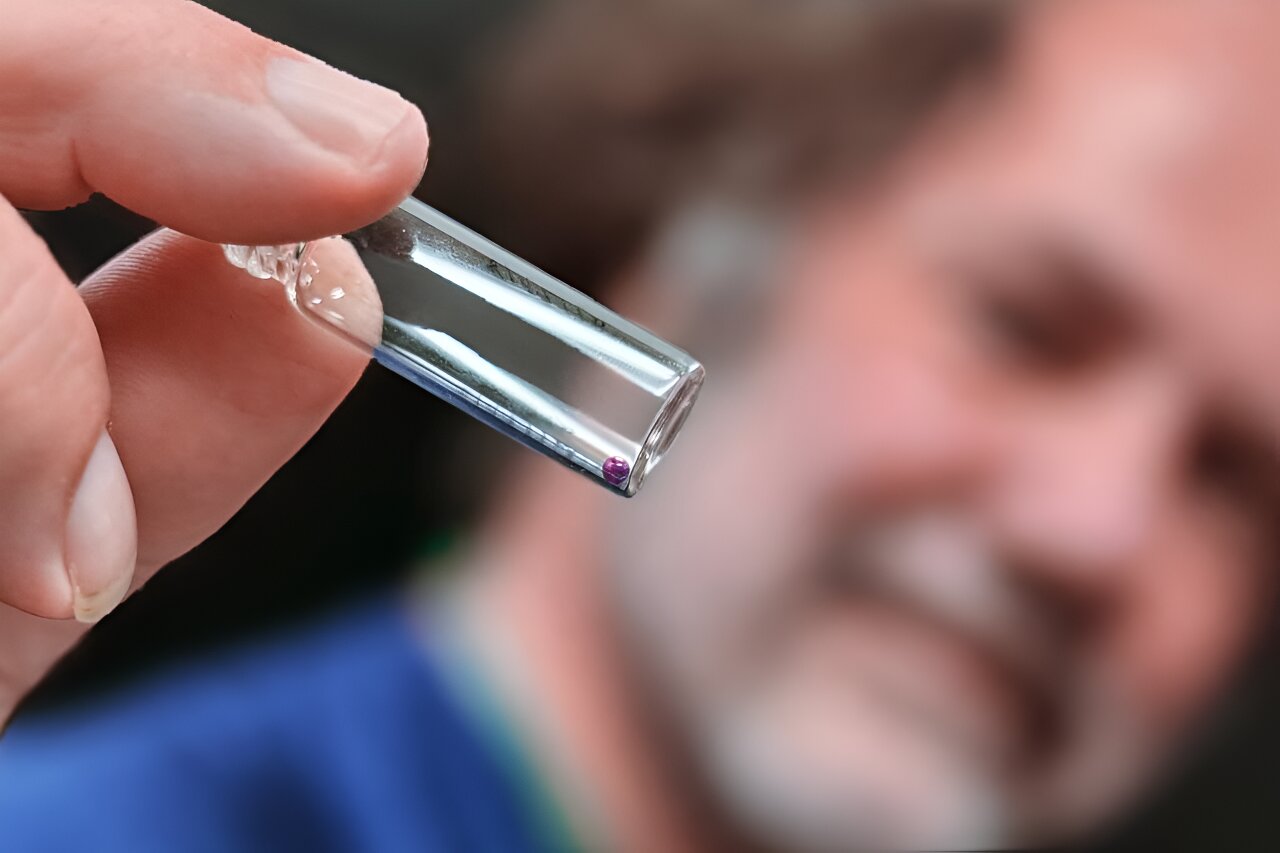Thanks to human ingenuity and zero gravity, we reap important benefits from science in space. Consider smart phones with built-in navigation systems and cameras.
Such transformational technologies seem to blend into the rhythm of our everyday lives overnight. But they emerged from years of discoveries and developments of materials that can withstand harsh environments outside our atmosphere. They evolve from decades of laying foundations in basic science to understand how atoms behave in different materials under different conditions.
Building on this past, a global team of researchers has set a new benchmark for future experiments making materials in space rather than for space. The team included members from the Department of Energy’s Oak Ridge and Argonne national laboratories, Materials Development, Inc., NASA, the Japan Aerospace Exploration Agency, or JAXA, ISIS Neutron and Muon Source, Alfred University and the University of New Mexico. Together, they discovered that many kinds of glass, including ones that could be developed for next-generation optical devices, have similar atomic structure and arrangements and can successfully be made in space.
The team’s paper is published in the journal npj Microgravity.
“The idea is to feel out the mechanisms behind space-based manufacturing, which can lead to materials that are not necessarily available on Earth,” said Jörg Neuefeind, who joined ORNL in 2004 to build an instrument called NOMAD at the lab’s Spallation Neutron Source (SNS). NOMAD, the fastest neutron diffractometer in the world, helps scientists measure the arrangement of atoms by seeing how neutrons bounce off them. NOMAD is one of 20 instruments at SNS that help scientists answer big questions and spur countless innovations, like drugs that more effectively treat diseases, more reliable aircraft and rocket engines, cars with better gas mileage and batteries that are safer, charge faster and last longer.
JAXA operators on Earth made and melted glass aboard the International Space Station (ISS), via remote control using a levitator. Levitators are used to suspend material samples during experiments to avoid interference from contact with other materials.
Once the next ISS mission ended months later and the space glass was brought to Earth, researchers used a combination of techniques that included neutrons, X-rays and powerful microscopes to measure and compare glass made and melted celestially versus terrestrially.
“We found that with containerless techniques, such as the levitator, we can create unconventional glasses in microgravity,” said JAXA’s Takehiko Ishikawa, pioneer of the electrostatic levitator used to make the glass beads aboard the ISS.
The researchers relied on NOMAD at SNS to study the glass samples with neutrons and beamlines at Argonne’s Advanced Photon Source to study the samples with X-rays. Both SNS and APS are DOE Office of Science user facilities.
“There’s only so much material you can fly up to space and get back, and that was actually one of the reasons NOMAD was so well-suited to this experiment,” said Stephen Wilke of Materials Development Inc., and a visiting scientist at Argonne. “We were getting back just single beads of glass about an eighth inch in diameter, which are very difficult to measure in terms of atomic structure. Since NOMAD excels at measuring extremely small samples, it allowed us to easily compare single beads we made in the lab with those made on the space station.”
Mysteries of glass
Glass, it turns out, is not so clear cut. Unlike crystalline solids, such as salt, glass atoms do not have a uniform structure. Its unusual atomic arrangement, though remarkably stable, is perhaps best described as a random network of molecules that share coordinate atoms. Neither entirely solid nor entirely liquid, glass also comes in different forms, including polymer, oxide and metallic, such as for eyeglass lenses, fiber optic threads, and hardware for deep space missions.
In 2022, Neuefeind, Wilke and Rick Weber, an industry subject matter expert on glass, experimented with two oxides of neodymium and titanium and discovered a potential for optical applications. The combination of these two elements exhibits unusual strengths not seen in similar research campaigns. These findings led them to pursue their current studies with NASA.
“[The experiment in 2022] taught us something really remarkable,” said Weber, of Materials Development Inc. “One of the glasses has a network that’s completely different from a normal, four-coordinate network typical of silica. These glasses have a six-coordinate network. They’re really out there. It’s exciting from a glass science perspective. But as a practical matter, it also means more opportunities for doing new things with optical materials and new kinds of devices.”
Scientists often use neutrons and X-rays in parallel to collect data no other techniques can produce, allowing us to understand the arrangement of atoms of different elements within a sample. Neutrons helped the team see the lighter elements in the space glass, like oxygen, while X-rays helped them see the heavier elements, such as neodymium and titanium. If significant differences existed between the space glass and terrestrial glass, they likely would have shown up in the oxide sublattice, or arrangement of the oxygen atoms, in the distribution of the heavy atoms, or both.
Neutrons will become ever more important tools to unlock the mysteries of matter as scientists explore new frontiers, space notwithstanding.
“We must understand not only the effects of space on matter but also its effects on how things form,” Neuefeind said. “Because of their unique properties, neutrons are part of solving these kinds of puzzles.”
More information:
Stephen K. Wilke et al, Microgravity effects on nonequilibrium melt processing of neodymium titanate: thermophysical properties, atomic structure, glass formation and crystallization, npj Microgravity (2024). DOI: 10.1038/s41526-024-00371-x
Citation:
Neutrons open window to explore space glass (2024, May 21)
retrieved 21 May 2024
from https://phys.org/news/2024-05-neutrons-window-explore-space-glass.html
This document is subject to copyright. Apart from any fair dealing for the purpose of private study or research, no
part may be reproduced without the written permission. The content is provided for information purposes only.

